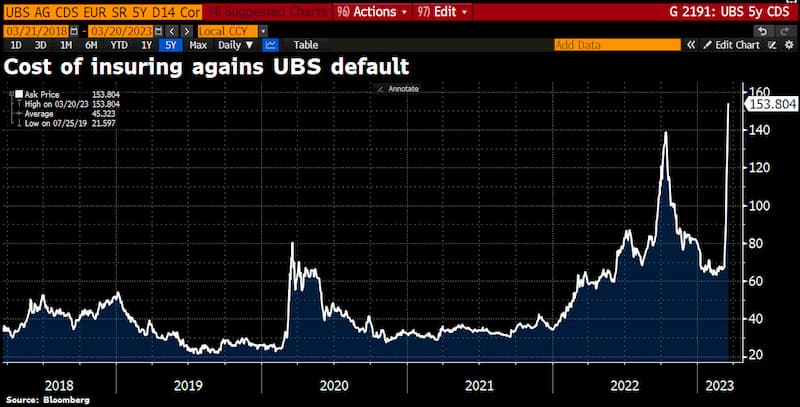Navigating The Chinese Market: The Struggles Of BMW, Porsche, And Other Automakers

Table of Contents
Intense Competition and Local Brands
The Chinese automotive market is fiercely competitive, and luxury automakers face a two-pronged challenge: established international rivals and the rapidly growing domestic sector.
The Rise of Domestic Automakers
The rise of Chinese auto brands like Geely, Great Wall Motors, and BYD represents a significant shift in the market landscape. These domestic players are increasingly challenging established luxury brands.
- Competitive Pricing and Features: Domestic automakers offer competitive pricing and features specifically tailored to Chinese consumer preferences, often undercutting international brands.
- Reduced Joint Ventures: The trend towards fewer joint ventures between international and domestic brands reflects the growing expertise and confidence of Chinese automakers.
- Government Support: Government support, including subsidies and favorable policies, further strengthens the position of domestic auto brands in the market. This makes it harder for foreign brands to gain market share.
Price Wars and Premium Positioning
Maintaining a premium brand image while competing on price is a delicate balancing act. Luxury brands must find ways to justify their higher price points while still appealing to a price-sensitive market.
- Localized Pricing Strategies: Adjusting pricing to the Chinese market can impact profit margins, requiring careful financial planning and market analysis.
- Differentiation through Innovation: Focusing on technological advancements, unique designs, and exceptional customer service is vital for maintaining a premium brand image and justifying higher prices. This includes offering features specifically desired by Chinese consumers.
Understanding Unique Chinese Consumer Preferences
Success in the Chinese market hinges on understanding and catering to the specific needs and preferences of Chinese consumers.
Tech-Savvy Consumers and Digital Marketing
Chinese consumers are highly tech-savvy and digitally engaged, demanding seamless online experiences throughout the entire car buying process.
- Robust Digital Marketing: Effective digital marketing strategies, including targeted social media campaigns and engaging e-commerce platforms, are essential for reaching and converting potential customers.
- WeChat Integration: Understanding the intricacies of WeChat, the dominant social media platform in China, is vital for effective marketing and customer engagement.
- Data-Driven Personalization: Utilizing data analytics to personalize marketing campaigns and tailor offers to individual consumer preferences can significantly improve conversion rates.
Cultural Nuances and Brand Perception
Luxury brands must carefully consider the cultural context when developing their marketing strategies and product offerings.
- Cultural Resonance: Brand storytelling and messaging must resonate with Chinese cultural values and aspirations.
- Understanding "Face": The concept of "face" (mianzi) – social status and reputation – heavily influences purchasing decisions. Luxury brands must understand this dynamic to effectively position themselves.
- Product Adaptation: Adapting product features and designs to meet the specific needs and preferences of the Chinese market is crucial for success. For example, understanding the preference for specific colors or features.
Navigating Regulatory Hurdles and Infrastructure
The Chinese automotive market is subject to stringent regulations and unique infrastructural considerations.
Stringent Environmental Regulations and Emission Standards
China's commitment to environmental protection has led to increasingly strict emission standards and a strong push towards electric vehicles (EVs).
- EV Investment: Investment in electric vehicle technology and infrastructure is not merely advisable but essential for long-term sustainability in the Chinese market.
- Meeting Regulatory Compliance: Meeting stringent safety and emission regulations is costly and complex, requiring significant investment and expertise.
Import Tariffs and Supply Chain Management
Import tariffs and complex supply chain logistics add significant costs to operating in the Chinese market.
- Local Production: Localizing production and sourcing materials can help mitigate these challenges, although it requires substantial investment.
- Efficient Logistics: Streamlining supply chain management and optimizing logistics are crucial for minimizing delays and controlling costs.
Conclusion
The Chinese automotive market presents a complex yet rewarding challenge for international luxury automakers like BMW and Porsche. Success depends on understanding the intense competition from domestic brands, adapting to unique consumer preferences, and navigating intricate regulatory hurdles. By prioritizing localization, embracing technological innovation (especially in EVs), and developing sophisticated digital marketing strategies, luxury brands can significantly improve their chances of achieving sustainable growth in this vital market. Mastering how to effectively navigate the Chinese market is essential for long-term success in the global automotive industry. Start strategizing your approach today!

Featured Posts
-
 Razer Blade 16 2025 Ultra Thin Laptop Performance And Cost Analysis
Apr 22, 2025
Razer Blade 16 2025 Ultra Thin Laptop Performance And Cost Analysis
Apr 22, 2025 -
 Chat Gpt Developer Open Ai Under Ftc Investigation Data Privacy And Ai Regulation
Apr 22, 2025
Chat Gpt Developer Open Ai Under Ftc Investigation Data Privacy And Ai Regulation
Apr 22, 2025 -
 Open Ai Simplifies Voice Assistant Development 2024 Event Highlights
Apr 22, 2025
Open Ai Simplifies Voice Assistant Development 2024 Event Highlights
Apr 22, 2025 -
 Fsu Security Breach Swift Police Response Fails To Quell Student Fears
Apr 22, 2025
Fsu Security Breach Swift Police Response Fails To Quell Student Fears
Apr 22, 2025 -
 La Wildfires Exploring The Ethics Of Disaster Betting Markets
Apr 22, 2025
La Wildfires Exploring The Ethics Of Disaster Betting Markets
Apr 22, 2025
